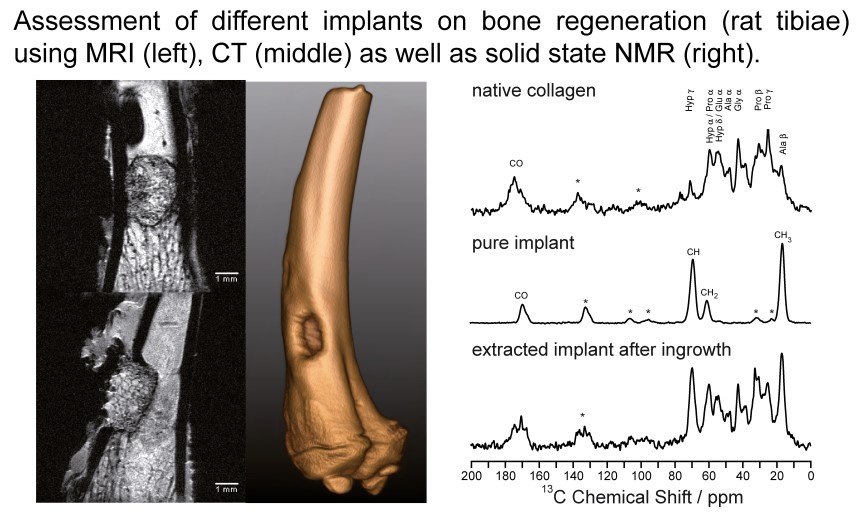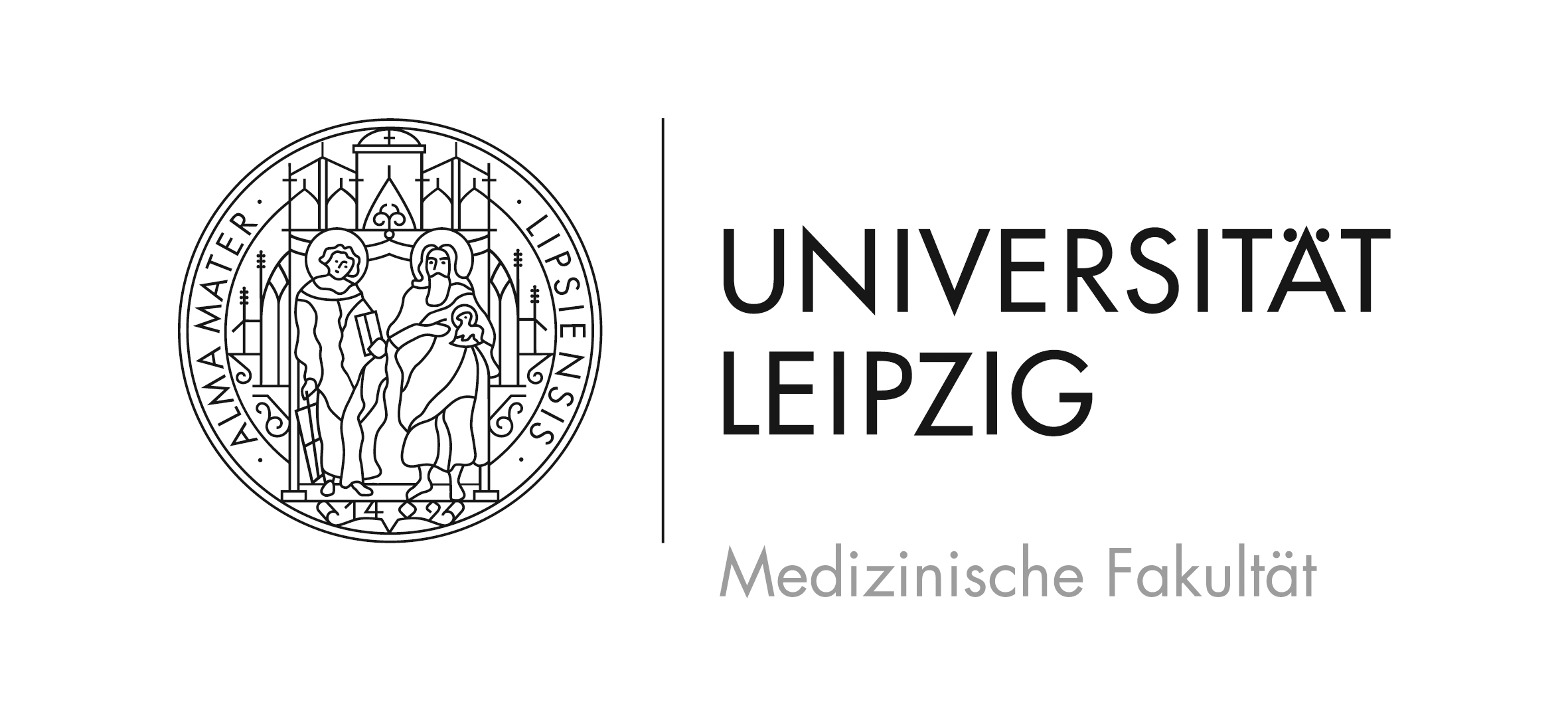Characterization of Biological Tissue
We analyze biological tissue samples and implant materials using a broad range of NMR methods, MRI and CT. These investigations probe various tissue properties essential for successful pre-clinical assessments. Using these methods, we determine tissue quality and the properties of the molecules in the tissue (over the whole sample or by using imaging techniques). Applications are manifold; nevertheless, our main expertise focuses on tissues, such as bone and cartilage. For example, we used imaging of small animals (or parts of them) to determine the physical dimensions of different organs, to investigate the influence of different treatments on the tissue integrity and quality, and to assess the influence of an implant on the surrounding tissue. In the latter case, we also performed solid-state NMR investigating the de novo generated tissue.
Towards the objectives of our research and our collaboration partners, we apply our methods, which we continuously extend:
- Solid-state NMR to evaluate the amount and quality of extracellular matrix components (collagen, hydroxyapatite, glycosaminoglycans, etc.) in bone, cartilage, skin, …
- µMRI (soft and hard tissue contrast, up to 25 mm sample diameter)
- Computer tomography (hard tissue contrast, determination of bone mineral density, up to 50 mm sample diameter and 35 keV)
- Pulsed field gradient NMR to determine the apparent self-diffusion coefficient of proteins in gel-like systems which mimic the extracellular matrix



Key publications:
- Förster, Y., Schulze, S., Penk, A., Neuber, C., Möller, S., Hintze, V., Scharnweber, D., Schnabelrauch, M., Pietzsch, J., Huster, D., Rammelt, S. The influence of different artificial extracellular matrix implant coatings on the regeneration of a critical size femur defect in rats. Mater Sci Eng C 116, 2020, 111157
- Nowald, C., Penk, A., Chiu, H., Bein, T., Huster, D., Lieleg, O. A selective mucin/methylcellulose hybrid gel with tailored mechanical properties. Macromol Biosci 16 2016 567-679
- Kaiser, M., Penk, A., Franke, H., Krügel, U., Nörenberg, W., Huster, D., Schaefer, M. Lack of functional P2X7 receptor aggravates brain edema development after middle cerebral artery occlusion. Purineric Signal 12, 2016, 453-463
- Iseli, H.P., Körber, N., Koch, C., Karl, A., Penk, A., Huster, D., Reichenbach, A., Wiedemann, P., Francke, M. Scleral cross-linking by riboflavin and blue light application in young rabbits: damage threshold and eye growth inhibition. Graefes Arch Clin Exp Ophthalmol 254, 2016, 109-122
Team:
Dr. Anja Penk
Collaborations:
- Prof. Dr. Stefan Rammelt, University Hospital Carl Gustav Carus, University of Technology, Dresden
- Prof. Dr. Dr. Ines Liebscher, Rudolf Schönheimer Institute of Biochemistry, Leipzig University
- Dr. Florian Schlotter, CMR Unit, Heart Center Leipzig
